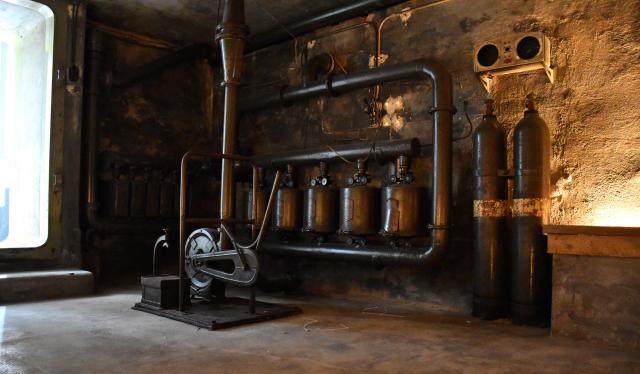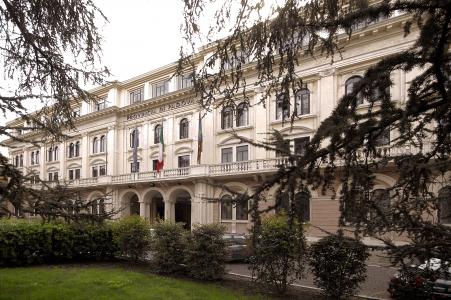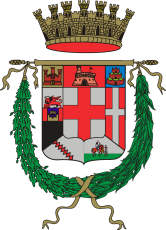
Tipologia museo
Gratuito
Servizi disponibili
Dettagli accessibilità

Descrizione
Sede storica della Provincia di Padova e della Prefettura, Palazzo Santo Stefano è uno scrigno di bellezze e memorie ancora poco conosciute da cittadini e turisti. Le sue origini risalgono all’anno Mille come monastero benedettino femminile, ma sono tante le trasformazioni che si sono succedute soprattutto dopo le soppressioni napoleoniche del 1810. Dal 1868 l’edificio ospita l’Amministrazione provinciale, la Prefettura e la residenza del Prefetto. È un luogo tutto da scoprire con le bellezze artistiche e architettoniche racchiuse nelle sue sale e nello scalone dell’ingresso storico, e con una novità sconosciuta ai più, grazie ai lavori recentemente eseguiti dalla Provincia: un rifugio antigas interrato e un rifugio antiaereo realizzati nel periodo bellico.
Il percorso museale si snoda in due parti: la prima, attraverso lo Scalone d’onore, tra i piani terra, primo ed interrato del palazzo; la seconda - percorrendo Piazza Antenore e Riviera Tito Livio - conduce al Rifugio antiaereo U.N.P.A.. La visita al Museo di Palazzo Santo Stefano, include una sala informativa al primo piano, dove visionare filmati storici, testimonianze e documenti d’archivio. Si accede quindi alle ottocentesche Sala di Rappresentanza, Sala Consiliare, Sala Giunta. Accompagnati da una guida, i gruppi, con un massimo di 10 persone, visitano i rifugi antigas e tubolare. Dopo la visita alla Tomba Antenore e le medioevali Mura comunali, si giunge al rifugio antiaereo U.N.P.A.

St. Stefano Palace Museum
Historic headquarters of the Padua Province and the Prefecture, St. Stefano palace is a treasure chest of beauties and memories still little known by citizens and tourists. Its origins date back to the year thousand: initially, it was a female Benedictine monastery, but later its structure changed consistently, especially after the Napoleonic demolitions in 1810. From 1868 the building hosts the provincial administration, the Prefecture, and the Prefect's residence. It is a place you'll enjoy discovering: its halls contain astonishing artistic and architectural beauties that you have only dreamed of! The staircase at the entrance will leave you breathless. And last but not least, there is an innovation unknown to most people: thanks to work recently carried out by the Province of Padua, you may now visit an underground gas shelter and an air raid shelter made during the war. The museum tour is divided into two routes: the first comprehends the Grand Staircase, the ground, first, and basement floors; the second, walking along Antenore square and Riviera Tito Livio, leads to the U.N.P.A. air raid shelter. The St. Stefano Palace Museum tour includes an information hall on the first floor, where you may see historical footage, archive documents, and historical evidence. From here, you have access to the nineteenth-century Representation Hall and the Council Hall. Groups of 10 people maximum may take a guided tour of the gas and tubular shelters. After visiting Antenore's tomb and the medieval city halls, you will arrive at the U.N.P.A air raid shelter.

